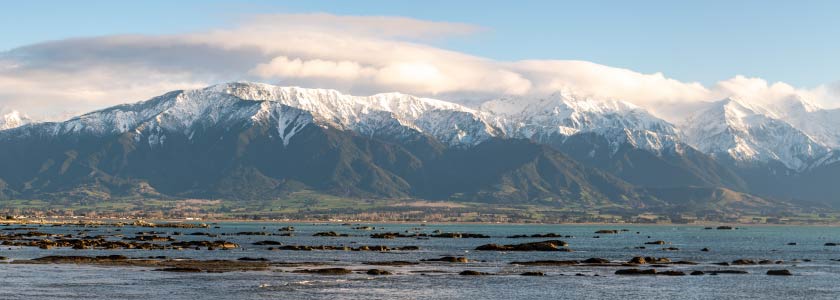Prehistoric New Zealand Earthquake: A DNA Story

Researchers working on the South Island of New Zealand recently published evidence that an 800-year old earthquake can be detected in the genes of bull kelp living offshore today.
2016 Kaikōura earthquake
The study was prompted after a professor of zoology at the University of Otago noticed that an earthquake in 2016 near the town of Kaikoura resulted in the sea floor being raised out of the water by 6 feet. Professor Jon Waters and his colleagues began to wonder what happened to kelp after an event like that.
Like the Kaikoura quake, the 800-year old tremblor likely raised long stretches of rocky seabed out of the water, noted the University of Otago. Today, visitors to Kaikoura, a mountain-backed east coast town popular with tourists and adventure seekers, can easily see the old seabed.
Airing out the seabed resulted in the quick and large-scale die-off of bull kelp, and researchers theorized that the Dunedin earthquake of 800 years ago would have had a similar result, noted The New York Times.
“That made way for newcomers of a different genetic background, the ancestors of today’s kelp,” the paper reported. “The finding suggests that moments of cataclysmic change in an environment can be revealed by comparing genes across populations of some organisms.”
Genomic footprint of coastal earthquake uplift
The study, which was published in the Proceedings of the Royal Society B, found that the underwater ecosystem rapidly adapted to the new post-earthquake landscape. Since kelp forests are long-lived, and since a kelp forest offers little room for other species, the algae can show how traces of the disaster for a long time.
“Genome-wide analyses of three co-distributed keystone kelp taxa revealed that post-earthquake recolonization drove the evolution of novel, large-scale intertidal spatial genetic ‘sectors’ which are tightly linked to geological fault boundaries,” the authors wrote in the study. “Demographic simulations confirmed that, following widespread extirpation, parallel expansions into newly vacant habitats rapidly restructured genome-wide diversity.”
“We were just gobsmacked when we looked,” Dr. Waters told The New York Times. “We could see where the uplift zone was just by looking at the genetics.”
The study further illustrated a kelp version of “winner takes all” after a cataclysmic event.
“Although the strong genetic distinction between uplifted and non-uplifted regions has been slightly ‘blurred’ at the margins via localized secondary admixture, the failure of such admixed genes to penetrate the centre of the uplift zone apparently highlights the ‘founder takes all’ (high-density blocking) dynamics underpinning these rapid recolonization processes,” the authors wrote.
